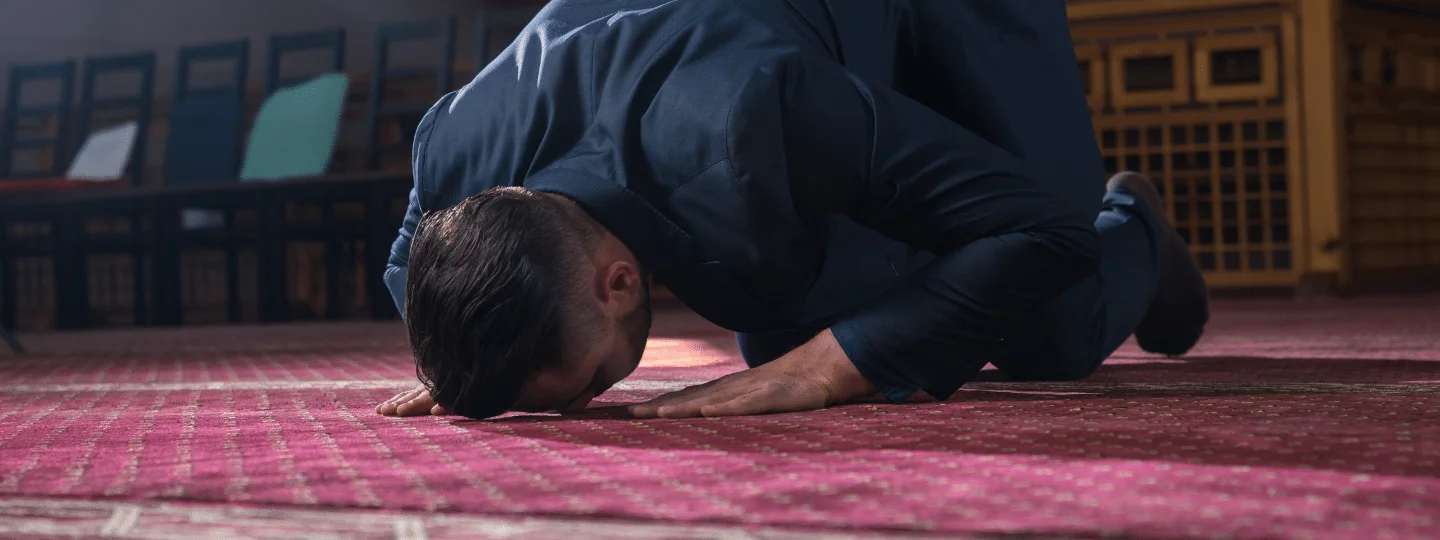Quran
Hadith
Islamic Text
بِسْمِ اللَّهِ الرَّحْمَنِ الرَّحِيمِ
In the Name of Allah Most Merciful Most Kind
Short Answer
You may make Salam with the Imam or after him, both are sound and followable opinions in the Hanafi Madhab. However, you cannot make Salam before the Imam.
Hadith
عِتْبَانَ بْنِ مَالِكٍ، قَالَ: صَلَّيْنَا مَعَ النَّبِيِّ صَلَّى اللهُ عَلَيْهِ وَسَلَّمَ فَسَلَّمْنَا حِينَ سَلَّمَ
Itban bin Malik (May Allah Most High be pleased with him) said: We prayed with the Prophet ﷺ . He made Salam. So, we made Salam when he ﷺ did so. (Sahih al-Bukhari, 838).
Salam is the closing greeting of the prayer. It is the final action of ritual prayer. The Hadith above clarifies that one makes Salam when the Imam makes Salam. As for making Salam with the Imam or after him, it is not categorical regarding that issue. This is why Hanafi scholars differed over it.
One could claim that since the Hadith says, ‘we made Salam when he ﷺ did,’ this alludes to it being at the same time. This is a reasonable argument. However, this is not categorical since you would have to wait for the Imam to initiate and thus would still make Salam after him.
As for those who hold the position that one makes Salam after the Imam, they have Hadith narrations to support their view. Namely, the narrations that command us to follow the Imam. Following the Imam necessitates performing Salam after him, not at the same time as him.
إِنَّمَا جُعِلَ الإِمَامُ لِيُؤْتَمَّ بِهِ، فَإِذَا رَكَعَ فَارْكَعُوا، وَإِذَا رَفَعَ فَارْفَعُوا
The Prophet ﷺ said, ‘The Imam is to be followed. So if he bows then bow, and if he rises then rise (from bowing).’ (Sahih al-Bukhari, 1113).
Hanafi scholars
Despite these discussions, it is clear that there is room for difference regarding making Salam with the Imam or after him. This was reflected in the authoritative works of the Hanafi Madhab.
اختلفوا في تسليم المقتدي عند أبي يوسف ومحمد رحمهما الله تعالى يسلم بعد الإمام وعن أبي حنيفة رحمه الله تعالى فيه روايتان في رواية يسلم بعد الإمام وفي رواية يسلم مقارناً الإمام قال الفقيه أبو جعفر رحمه الله تعالى المختار أن ينتظر إذا سلم الإمام عن يمينه فيسلم المقتدي عن يمينه وإذا فرغ الإمام عن يساره يسلم المقتدي عن يساره
They differed regarding the followers Salam. According to Abu Yusuf and Muhammad (Shaybani), may Allah Most High have mercy upon them, he makes Salam after the Salam of the Imam. As for Abu Hanifah, may Allah Most High have mercy upon him, there are two narrations regarding it from him. In one narration, he says the salaam is after the Imam. And in another narration, he says the Salam is with the Imam.
The jurist Abu Jafar, may Allah Most High have mercy on him, said: The chosen position is to wait until the imam makes Salam on his right, then the follower makes Salam on his right. And when the Imam completes Salam on his left, the follower makes Salam on his left. (Imam Fakhr al-Deen Hasan bin Mansoor, Fataawa Qadi Khan).
In the Nass above, Imam Qadi Khan mentions three opinions regarding making Salam with the Imam or after him. One states with him, the other after him and a third seems to combine the two. This third opinion encourages the follower to make Salam to the right after the Imams Salam to the right. Then he makes Salam to the left after the Imams Salam to the left.
Both views are sound
Hanafi scholars generally considered both views valid. They did not seem to unequivocally give one opinion preference over another. Therefore, performing the salam is acceptable either way.
Furthermore, in the Nass (text) below, Imam Ibn Abideen represents the approach of the Hanafis. They tend to mention both opinions without clearly favouring one over the other.
وَقَالَ السَّرَخْسِيُّ: إنَّ قَوْلَهُ أَدَقُّ وَأَجْوَدُ وَقَوْلَهُمَا أَرْفَقُ وَأَحْوَطُ. وَفِي عَوْنِ الْمَرْوَزِيِّ: الْمُخْتَارُ لِلْفَتْوَى فِي صِحَّةِ الشُّرُوعِ قَوْلُهُ وَفِي الْأَفْضَلِيَّةِ قَوْلُهُمَا. اهـ. (رد المحتار على الدر المختار)
(Imam) al-Sarakhsi said: His (Abu Hanifah) statement is more precise and better, and their (Abu Yusuf and Muhammad) statement is easier and more cautious. In Awn al-Marwazi, he said: The preferred view for Fatwa is that his opinion is taken for validity and their opinion for superiority. (Imam Muhammad Ameen bin Umar bin Abideen, Radd al-Muhtaar).
A third opinion?
An opinion says: one should make Salam to the right after the Imams Salam to the right. Then he makes Salam to the left after the Imams Salam to the left. Is this a third opinion? Or is it simply a representation of the view that states the follower should make Salam after the Imam? One could argue either way. In any case, it seems to be the preferred view in al-Fataawa al-Hindiyah.
اخْتَلَفُوا فِي تَسْلِيمِ الْمُقْتَدِي قَالَ الْفَقِيهُ أَبُو جَعْفَرٍ الْمُخْتَارُ أَنْ يَنْتَظِرَ إذَا سَلَّمَ الْإِمَامُ عَنْ يَمِينِهِ يُسَلِّمُ الْمُقْتَدِي عَنْ يَمِينِهِ وَإِذَا فَرَغَ عَنْ يَسَارِهِ يُسَلِّمُ الْمُقْتَدِي عَنْ يَسَارِهِ. كَذَا فِي فَتَاوَى قَاضِي خَانْ. (الفتاوى الهندية)
They differed regarding the Salam of a follower. The jurist Abu Jafar said: The chosen position is to wait until the Imam makes Salam on his right, then the follower makes Salam on his right. And when the Imam completes Salam on his left, the follower makes Salam on his left. This was mentioned in Fataawa Qadi Khan. (Al-Fataawa al-Hindiyah).
Conclusion
An individual can make Salam with the Imam or after him. Both practices are acceptable. Hadith evidence is somewhat open to interpretation so allows for a slight difference. It is important for Muslims to understand and respect difference of opinion.
Such tolerance has been a feature of Ahl al-Sunnah from the beginning. However, this tolerance is under attack now, due to the prevalence of sectarianism and superficiality in religious discourse.
And Allah Most High Knows Best.
–Answered by Shaykh Noorud-deen Rashid (29.03.24)






